Cement-Based Solidification/Stabilization as a Pathway for Encapsulating Palm Oil Residual Biomass Post Heavy Metal Adsorption
Abstract
:1. Introduction
2. Materials and Methods
2.1. Biomass Preparation
2.2. Sorption-Desorption Cycles
2.3. Cement-Based Solidification/Stabilization
2.4. Mechanical Resistance Testing
2.5. Leaching Tests
3. Results
3.1. Biomass Characterization
3.2. Effect of Biosorbent Dosage
3.3. Desorption Experiments
3.3.1. Effect of Desorbing Agent
3.3.2. Desorption Cycles
3.4. Mechanical Resistance Testing
3.5. Leaching Testing
4. Conclusions
Author Contributions
Funding
Institutional Review Board Statement
Informed Consent Statement
Data Availability Statement
Acknowledgments
Conflicts of Interest
References
- Monaco, A.; Lacalamita, A.; Amoroso, N.; D’orta, A.; Del Buono, A.; Di Tuoro, F.; Tangaro, S.; Galeandro, A.I.; Bellotti, R. Random Forests Highlight the Combined Effect of Environmental Heavy Metals Exposure and Genetic Damages for Cardiovascular Diseases. Appl. Sci. 2021, 11, 8405. [Google Scholar] [CrossRef]
- Soceanu, A.; Dobrinas, S.; Dumitrescu, C.I.; Manea, N.; Sirbu, A.; Popescu, V.; Vizitiu, G. Physico-Chemical Parameters and Health Risk Analysis of Groundwater Quality. Appl. Sci. 2021, 11, 4775. [Google Scholar] [CrossRef]
- Fdez-Sanromán, A.; Pazos, M.; Rosales, E.; Sanromán, M.A. Unravelling the Environmental Application of Biochar as Low-Cost Biosorbent: A Review. Appl. Sci. 2020, 10, 7810. [Google Scholar] [CrossRef]
- Ali, H.; Khan, E. Trophic transfer, bioaccumulation, and biomagnification of non-essential hazardous heavy metals and metalloids in food chains/webs—Concepts and implications for wildlife and human health. Hum. Ecol. Risk Assess. An. Int. J. 2018, 25, 1353–1376. [Google Scholar] [CrossRef]
- Zhou, C.; Huang, M.; Ren, H.; Yu, J.; Wu, J.; Ma, X. Bioaccumulation and detoxification mechanisms for lead uptake identified in Rhus chinensis Mill. seedlings. Ecotoxicol. Environ. Saf. 2017, 142, 59–68. [Google Scholar] [CrossRef] [PubMed]
- Chatterjee, S.; Mondal, S.; De, S. Design and scaling up of fixed bed adsorption columns for lead removal by treated laterite. J. Clean. Prod. 2018, 177, 760–774. [Google Scholar] [CrossRef]
- Lee, S.; Yun, J.M.; Lee, J.Y.; Hong, G.; Kim, J.S.; Kim, D.; Han, J.G. The Remediation Characteristics of Heavy Metals (Copper and Lead) on Applying Recycled Food Waste Ash and Electrokinetic Remediation Techniques. Appl. Sci. 2021, 11, 7437. [Google Scholar] [CrossRef]
- Tran, T.P.A.; Cho, H.; Cho, G.C.; Han, J.I.; Chang, I. Nickel (Ni2+) Removal from Water Using Gellan Gum–Sand Mixture as a Filter Material. Appl. Sci. 2021, 11, 7884. [Google Scholar] [CrossRef]
- Elgarahy, A.M.; Elwakeel, K.Z.; Mohammad, S.H.; Elshoubaky, G.A. A critical review of biosorption of dyes, heavy metals and metalloids from wastewater as an efficient and green process. Clean. Eng. Technol. 2021, 4, 100209. [Google Scholar] [CrossRef]
- Bailón-Salas, A.; Ordaz-Díaz, L.; Cháirez-Hernández, I.; Alvarado-de la Peña, A.; Proal-Nájera, J. Lead and copper removal from groundwater by spherical agglomeration using a biosurfactant extracted from Yucca decipiens Trel. Chemosphere 2018, 207, 278–284. [Google Scholar] [CrossRef]
- Islam, M.A.; Awual, M.R.; Angove, M.J. A review on nickel(II) adsorption in single and binary component systems and future path. J. Environ. Chem. Eng. 2019, 7, 103305. [Google Scholar] [CrossRef]
- Ong, D.; Pingul-Ong, S.; Kan, C.-C. Removal of nickel ions from aqueous solutions by manganese dioxide derived from groundwater treatment sludge. J. Clean. Prod. 2018, 190, 443–451. [Google Scholar] [CrossRef]
- Onoja, E.; Chandren, S.; Abdul Razak, F.I.; Mahat, N.A.; Wahab, R.A. Oil Palm (Elaeis guineensis) Biomass in Malaysia: The Present and Future Prospects. Waste Biomass Valorization 2019, 10, 2099–2117. [Google Scholar] [CrossRef]
- Torres Pérez, C.I.; Quintero Lopez, L.A. Analysis of African palm solid waste, as an alternative to use renewable energy in the department of Cesar. Ing. USBMed 2019, 10, 8–18. [Google Scholar] [CrossRef] [Green Version]
- Roy, A.; Stegemann, J. Nickel speciation in cement-stabilized/solidified metal treatment filtercakes. J. Hazard. Mater. 2017, 321, 353–361. [Google Scholar] [CrossRef] [PubMed]
- Dassekpo, J.; Ning, J.; Zha, X. Potential solidification/stabilization of clay-waste using green geopolymer remediation technologies. Process Saf. Environ. Prot. 2018, 117, 684–693. [Google Scholar] [CrossRef]
- Villabona-Ortíz, A.; Tejada-Tovar, C.; Gonzalez-Delgado, A. Application of cement-based solidification/stabilization technique for immobilizing lead and nickel ions after sorption-desorption cycles using cassava peels biomass. Indian J. Sci. Technol. 2018, 11, 1–6. [Google Scholar] [CrossRef]
- Wan, Q.; Rao, F.; Song, S.; Morales-Estrella, R.; Xie, X.; Tong, X. Chemical forms of lead immobilization in alkali-activated binders based on mine tailings. Cem. Concr. Compos. 2018, 92, 198–204. [Google Scholar] [CrossRef]
- Herrera-Barros, A.; Tejada-Tovar, C.; Villabona-Ortíz, A.; González-Delgado, A.D.; Benitez-Monroy, J. Cd (II) and Ni (II) uptake by novel biosorbent prepared from oil palm residual biomass and Al2O3 nanoparticles. Sustain. Chem. Pharm. 2020, 15, 100216. [Google Scholar] [CrossRef]
- Prabhu, S.G.; Srinikethan, G.; Hegde, S. Spontaneous Cr(VI) and Cd(II) biosorption potential of native pinnae tissue of Pteris vittata L.; a tropical invasive pteridophyte. Int. J. Phytoremediation 2019, 21, 380–390. [Google Scholar] [CrossRef] [PubMed]
- Liu, M.; Zhao, Y.; Yu, Z.; Cao, Z. Impact of Ni(Ⅱ) and Cd(Ⅱ) on the hydration and microstructure of cement pastes for immobilization: C-A-S-H composition and binding characteristic. Constr. Build. Mater. 2021, 310, 125284. [Google Scholar] [CrossRef]
- ASTM International ASTM C109/C109M. Standard Test Method for Compressive Strength of Hydraulic Cement Mortars (Using 2-in. or [50 mm] Cube Specimens). Annu. B. ASTM Stand. 2002, 4, 9. [Google Scholar]
- Ukwatta, P.; Mohajerani, A. Effect of organic content in biosolids on the properties of fired-clay bricks incorporated with biosolids. J. Mater. Civ. Eng. 2017, 29, 04017047. [Google Scholar] [CrossRef]
- Tejada-Tovar, C.; Gallo-Mercado, J.; Moscote, J.; Villabona, A.; Acevedo-Correa, D. Competitive adsorption of lead and nickel onto yam husk and palm bagasse in continuous system. Biotecnol. en el Sect. Agropecu. y Agroindustrial 2018, 16, 52–61. [Google Scholar]
- Bisla, V.; Rattan, G.; Singhal, S.; Kaushik, A. Green and novel adsorbent from rice straw extracted cellulose for efficient adsorption of Hg (II) ions in an aqueous medium. Int. J. Biol. Macromol. 2020, 161, 194–203. [Google Scholar] [CrossRef] [PubMed]
- Kumneadklang, S.; O-thong, S.; Larpkiattaworn, S. Characterization of cellulose fiber isolated from oil palm frond biomass. Mater. Today Proc. 2019, 17, 1995–2001. [Google Scholar] [CrossRef]
- Garcia, R. Biosorción de cadmio con raspo de uva. In Aproximación a la Monitorización del Proceso Mediante Sensores Químicos; Escola Tècnica Superior d’Enginyeria Industrial de Barcelona: Barcelona, Spain, 2008. [Google Scholar]
- Lezcano, J.; Gonzalez, A.; Ballester, M.; Blazquez, J.; Muñoz, C.; Garcia, B. Sorción y desorción de Cd, Cu y Pb utilizando biomasa de un hábitat eutrofizado en sistemas monometálicos y bimetálicos. Rev. Gestión Ambient. 2011, 92, 2666–2674. [Google Scholar]
- Tejada-Tovar, C.; Ruiz-Paternina, E.; Gallo-Mercado, J.; Moscote-Bohorquez, J. Evaluation of the biosorption with african palm bagasse for the removal of Pb (II) in solution. Rev. Prospect. 2015, 13, 59–67. [Google Scholar]
- Zhang, W.; An, Y.; Li, S.; Liu, Z.; Chen, Z.; Ren, Y.; Wang, S.; Zhang, X.; Wang, X. Enhanced heavy metal removal from an aqueous environment using an eco-friendly and sustainable adsorbent. Sci. Rep. 2020, 10, 16453. [Google Scholar] [CrossRef] [PubMed]
- Elgarahy, A.M.; Elwakeel, K.Z.; Elshoubaky, G.A.; Mohammad, S.H. Microwave-accelerated sorption of cationic dyes onto green marine algal biomass. Environ. Sci. Pollut. Res. 2019, 26, 22704–22722. [Google Scholar] [CrossRef]
- Ezeonuegbu, B.A.; Machido, D.A.; Whong, C.M.Z.; Japhet, W.S.; Alexiou, A.; Elazab, S.T.; Qusty, N.; Yaro, C.A.; Batiha, G.E.S. Agricultural waste of sugarcane bagasse as efficient adsorbent for lead and nickel removal from untreated wastewater: Biosorption, equilibrium isotherms, kinetics and desorption studies. Biotechnol. Rep. 2021, 30, e00614. [Google Scholar] [CrossRef]
- Chatterjee, A.; Abraham, J. Desorption of heavy metals from metal loaded sorbents and e-wastes: A review. Biotechnol. Lett. 2019, 41, 319–333. [Google Scholar] [CrossRef]
- Dawodu, F.A.; Akpan, B.M.; Akpomie, K.G. Sequestered capture and desorption of hexavalent chromium from solution and textile wastewater onto low cost Heinsia crinita seed coat biomass. Appl. Water Sci. 2019, 10, 32. [Google Scholar] [CrossRef] [Green Version]
- NTC 220; Determination of the Resistance of Hydraulic Cement Mortars Using Cubes of 50 mm or 50.8 mm on Each Side. Colombian Institute of Technical Standards and Certification: Bogotá, Colombia, 2004; Volume 53, p. 287.
- Wu, N.; Ji, T.; Huang, P.; Fu, T.; Zheng, X.; Xu, Q. Use of sugar cane bagasse ash in ultra-high performance concrete (UHPC) as cement replacement. Constr. Build. Mater. 2022, 317, 125881. [Google Scholar] [CrossRef]
- Akyıldız, A.; Köse, E.T.; Yıldız, A. Compressive strength and heavy metal leaching of concrete containing medical waste incineration ash. Constr. Build. Mater. 2017, 138, 326–332. Available online: https://www.sciencedirect.com/science/article/pii/S0950061817301952 (accessed on 9 November 2021). [CrossRef]
- Andreão, P.V.; Suleiman, A.R.; Cordeiro, G.C.; Nehdi, M.L. Beneficiation of Sugarcane Bagasse Ash: Pozzolanic Activity and Leaching Behavior. Waste Biomass Valorization 2020, 11, 4393–4402. [Google Scholar] [CrossRef]
- Arrieta, A.R.A.; Rangel, A.J.L.; Castilla, M.C.R. Removal of methylene blue from aqueous solutions using cassava peel (Manihot esculenta) modified with phosphoric acid. Prospectiva 2017, 15, 60–73. [Google Scholar] [CrossRef] [Green Version]
- Zhang, Y.; Shen, W.; Wu, M.; Shen, B.; Li, M.; Xu, G.; Zhang, B.; Ding, Q.; Chen, X. Experimental study on the utilization of copper tailing as micronized sand to prepare high performance concrete. Constr. Build. Mater. 2020, 244, 118312. [Google Scholar] [CrossRef]
- Sohal, B.; Ahmad Bhat, S.; Vig, A.P. Vermiremediation and comparative exploration of physicochemical, growth parameters, nutrients and heavy metals content of biomedical waste ash via ecosystem engineers Eisenia fetida. Ecotoxicol. Environ. Saf. 2021, 227, 112891. [Google Scholar] [CrossRef] [PubMed]
- Shi, D.; Wang, P.; Xu, X.; Gu, L.; Li, L.; Ma, H.; Hu, C. Effect of Source-Classified Collection of Municipal Solid Waste on Heavy Metals and Pozzolanic Properties of Incineration Residues. Int. J. Environ. Res. 2018, 12, 661–670. [Google Scholar] [CrossRef]

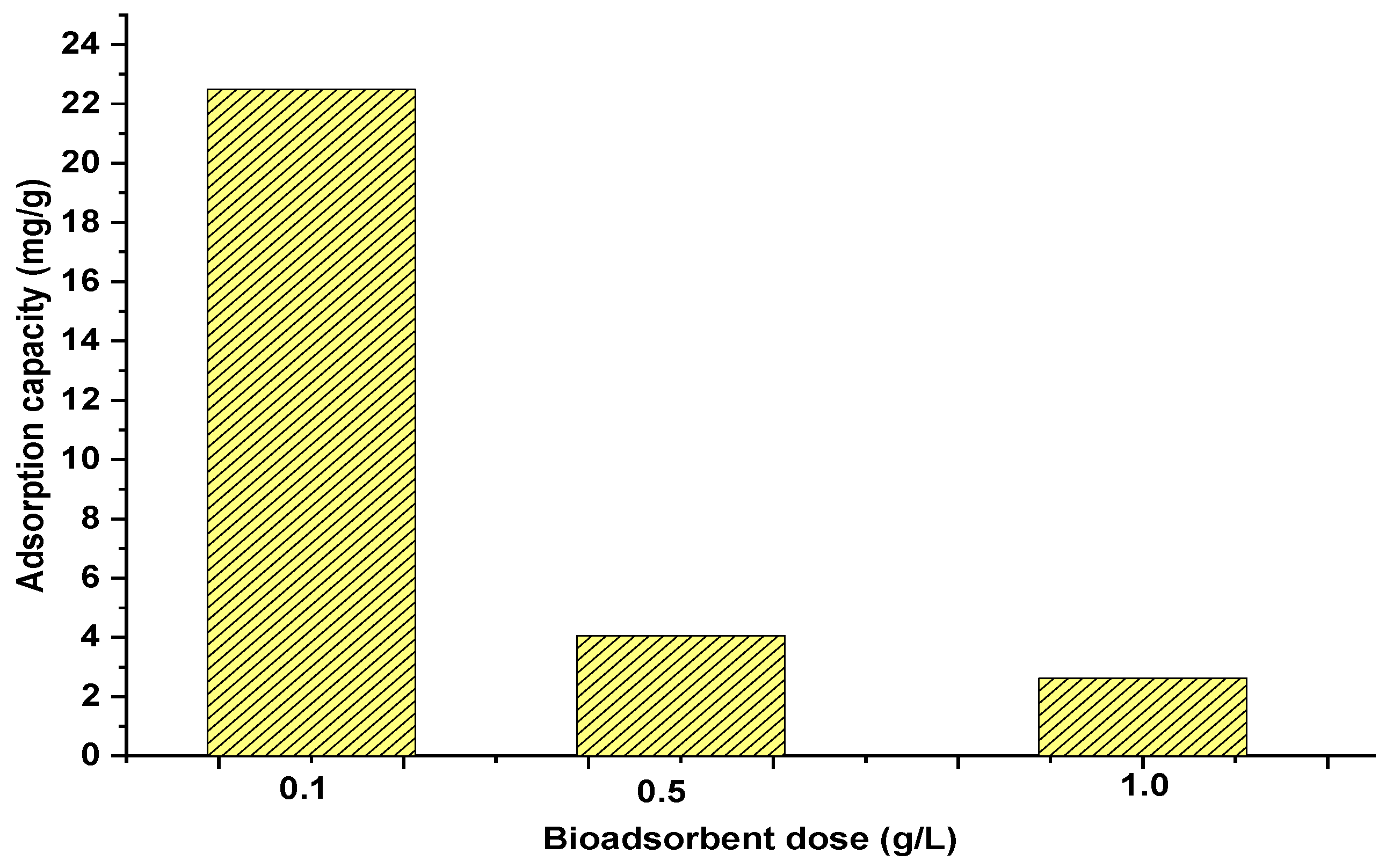

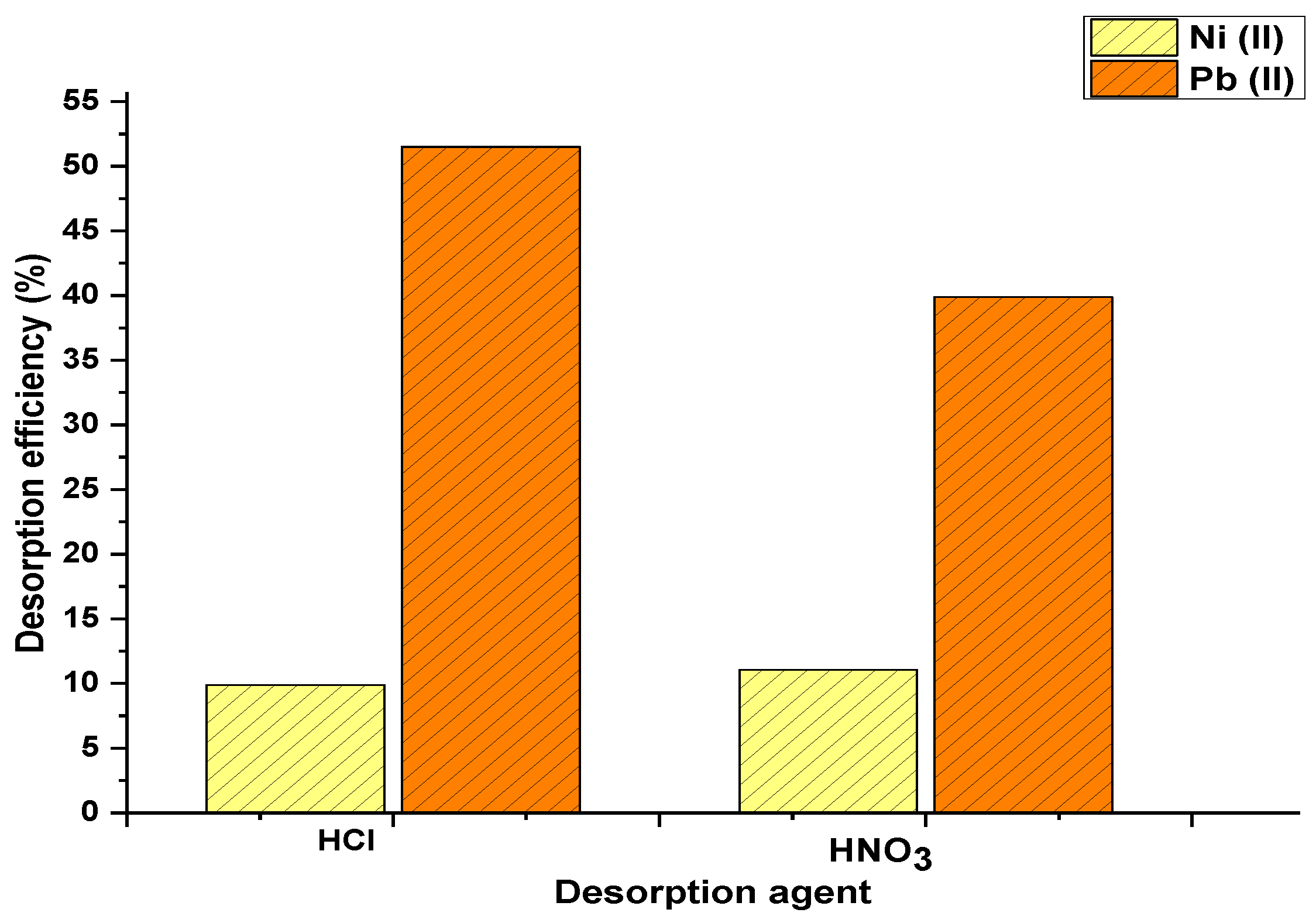
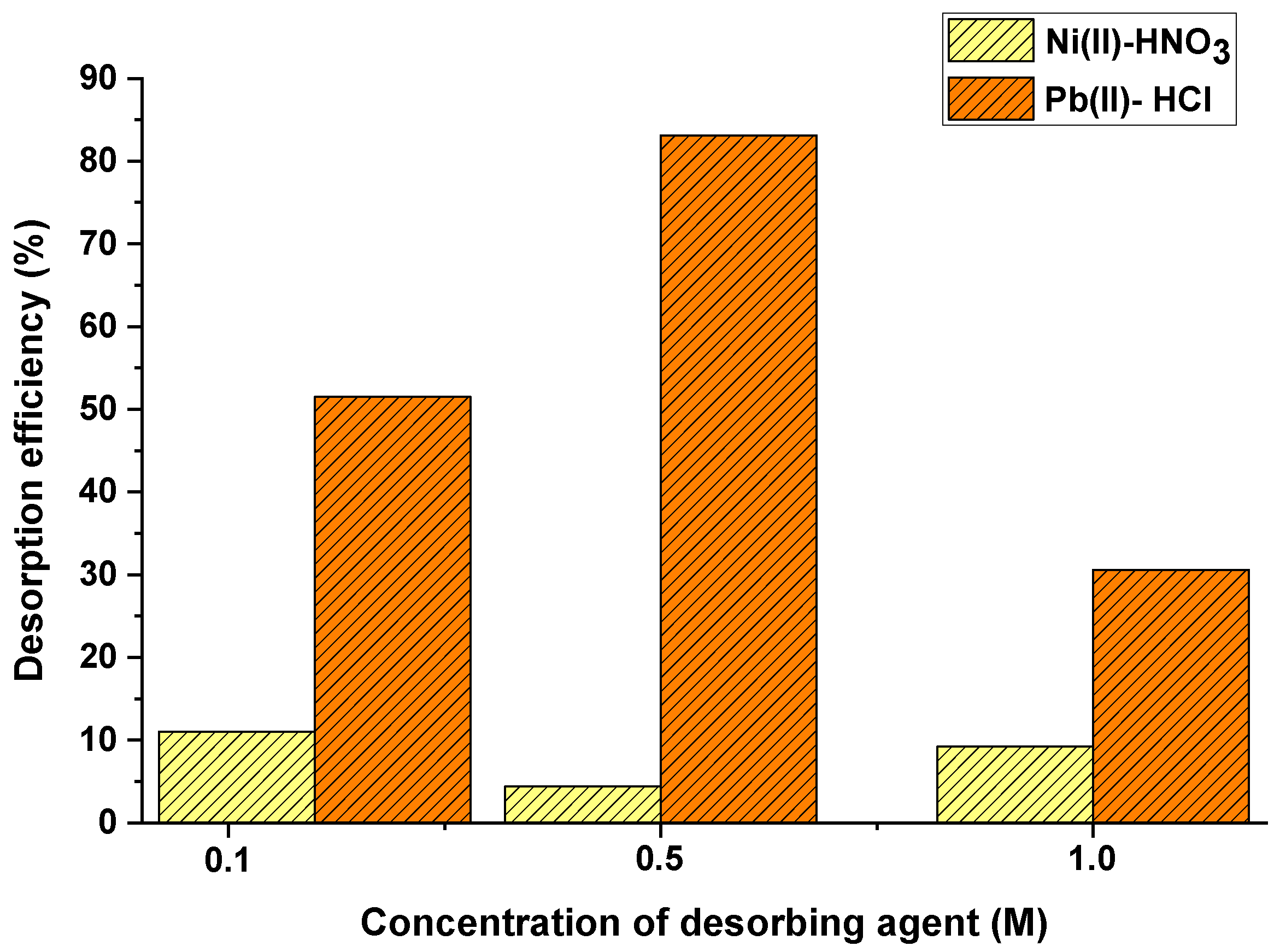
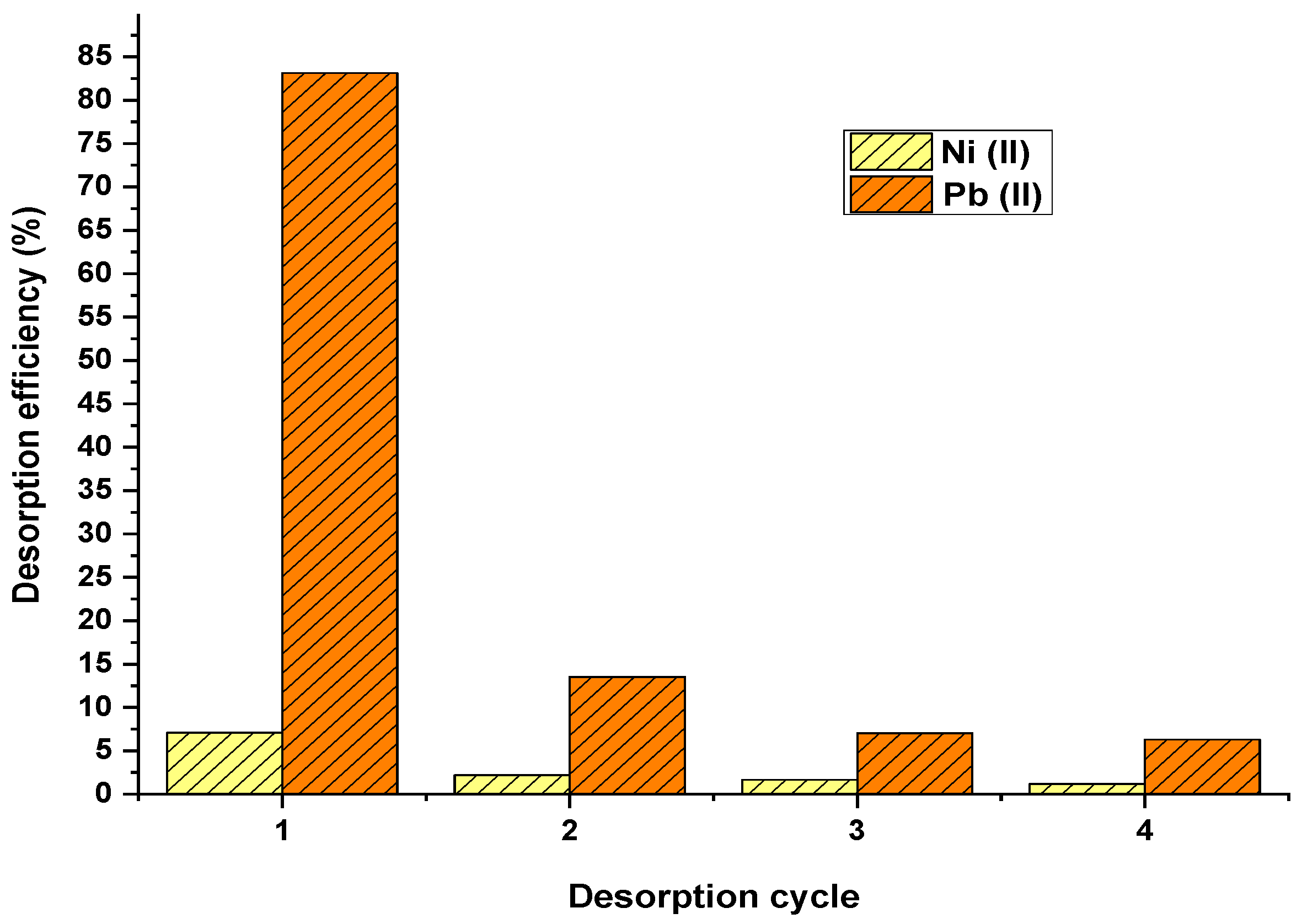

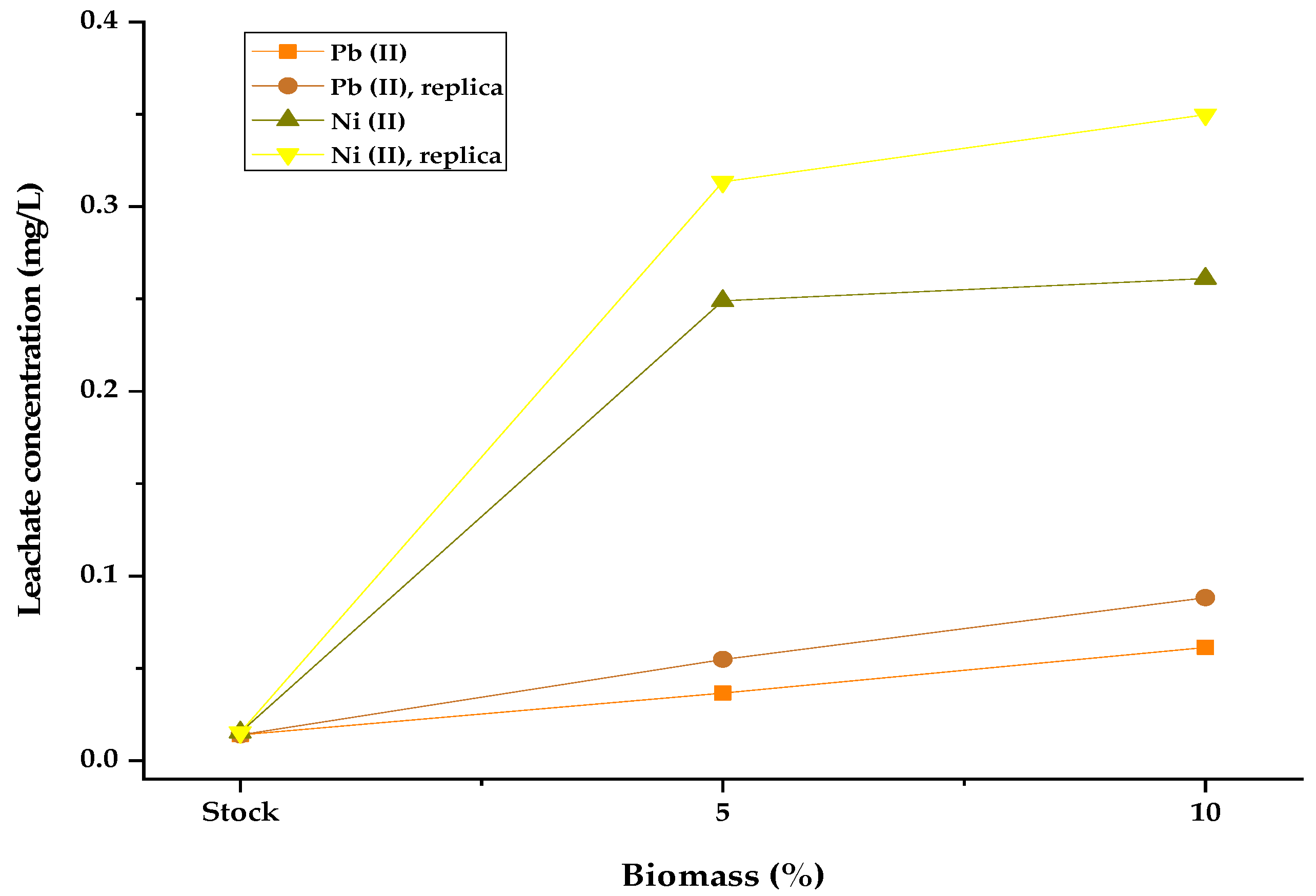
| Brick Composition | Leachate (mg/L) | Environmental Regulation |
|---|---|---|
| 5% Biomass-Pb (II) | 0.0365653 | 0.5 |
| 10% Biomass-Pb (II) | 0.0613582 | 0.5 |
| 5% Biomass-Pb (II), replica | 0.0548105 | 0.5 |
| 10% Biomass-Pb (II), replica | 0.0882052 | 0.5 |
| 5% Biomass-Ni (II) | 0.2489509 | 2 |
| 10% Biomass-Ni (II) | 0.2611262 | 2 |
| 5% Biomass-Ni (II), replica | 0.3134346 | 2 |
| 10% Biomass-Ni (II), replica | 0.3498111 | 2 |
Publisher’s Note: MDPI stays neutral with regard to jurisdictional claims in published maps and institutional affiliations. |
© 2022 by the authors. Licensee MDPI, Basel, Switzerland. This article is an open access article distributed under the terms and conditions of the Creative Commons Attribution (CC BY) license (https://creativecommons.org/licenses/by/4.0/).
Share and Cite
Tejada-Tovar, C.; Villabona-Ortíz, A.; González-Delgado, Á. Cement-Based Solidification/Stabilization as a Pathway for Encapsulating Palm Oil Residual Biomass Post Heavy Metal Adsorption. Materials 2022, 15, 5226. https://doi.org/10.3390/ma15155226
Tejada-Tovar C, Villabona-Ortíz A, González-Delgado Á. Cement-Based Solidification/Stabilization as a Pathway for Encapsulating Palm Oil Residual Biomass Post Heavy Metal Adsorption. Materials. 2022; 15(15):5226. https://doi.org/10.3390/ma15155226
Chicago/Turabian StyleTejada-Tovar, Candelaria, Angel Villabona-Ortíz, and Ángel González-Delgado. 2022. "Cement-Based Solidification/Stabilization as a Pathway for Encapsulating Palm Oil Residual Biomass Post Heavy Metal Adsorption" Materials 15, no. 15: 5226. https://doi.org/10.3390/ma15155226
APA StyleTejada-Tovar, C., Villabona-Ortíz, A., & González-Delgado, Á. (2022). Cement-Based Solidification/Stabilization as a Pathway for Encapsulating Palm Oil Residual Biomass Post Heavy Metal Adsorption. Materials, 15(15), 5226. https://doi.org/10.3390/ma15155226








